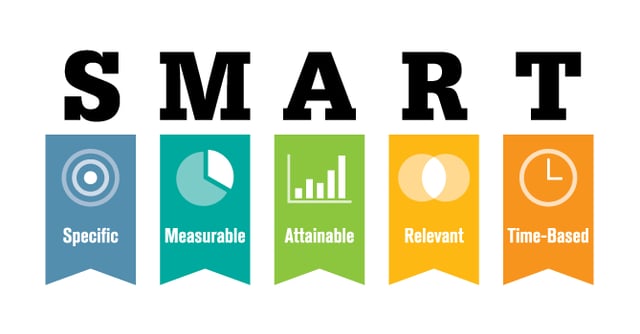How to Use Your Core Values to Inspire, Retain, and Energize Your Team
For the last few decades, but especially so in recent years, people are seeking out more than just an income from their place of employment. More...


You’re not Alice. You couldn’t be more different. You want to create mission-driven change, to change minds, motivate action, build a movement. You're not like Alice…
"Would you tell me, please, which way I ought to go from here?"
"That depends a good deal on where you want to get to," said the Cat.
"I don’t much care where--" said Alice.
"Then it doesn’t matter which way you go," said the Cat.
––An exchange between Alice and the Cheshire Cat in Lewis Carroll’s Alice in Wonderland
You know exactly where you want to go, so not every path will do.
With your SMART goals and objectives in hand you’ll be ready to develop a strategic marketing action plan to get there. Here’s how to create change for good with SMART goals and objectives.
I’m a big fan of distinguishing between goals and objectives and time frames. Here are the key strategic planning terms we use at Marketing Partners for our mission-driven and values-led clients.
But there’s no need to get hung up on the terms — the critical factor is that you start with your mission and then develop SMART goals and objectives to move forward.

You’ll uncover a few variations, but most often S.M.A.R.T stands for Specific, Measurable, Attainable, Relevant and Time-bound. (Sometimes you’ll see Specific, Measurable, Actionable, Realistic and Time-bound — but the concept is essentially the same.)

When creating an objective, you want it to be as short, crisp, and as specific as possible. Having "a good year" doesn't capture what your company actually wants to accomplish. Imagine that your boss is about to leave for vacation, and you have less than 90 seconds until he/she runs out the door, and all they want to hear is what next year's key objective is -- what are you going to tell her or him that concisely explains your plans?
Oftentimes, companies say they want to "increase their social media following." While that is a goal, it's not trackable. If you start the new year with 100 followers, and end with 101, technically you met your stated objective. But if you switch that objective to read, "We want to increase social media following by 25%," suddenly you can measure your progress every month to see if you're on track to ultimately jumping from 100 to 125 followers. Now you know when you hit your goal -- hopefully it's more ambitious than this example!
While having history-breaking goals can be beneficial -- it's still important to keep your goals realistic. If in your company history you've generated an average of 10 leads every month, jumping to 2,000 leads per month is probably not attainable. Many businesses do this to push employees to "go as far as they possibly can." But in reality, all this does is discourage team members because they see they can never be successful. SMART goals are goals you and your team can actually achieve with hard work, discipline and focus.
Why have a goal if the goal doesn't matter? Your goals and objectives need to be relevant to your business plan to advance your mission. Say you're a teddy bear business that, at maximum, can only sell 1,000 teddy bears per month through existing channels. In this situation, your goal would not be to "increase production of teddy bears from 1,000 per month to 5,000 per month." While it's great to have more product, if your existing distributors won't buy more, why bother? Your goal should be something along the lines of, "increase distribution channels by X%."
While each factor helps develop a solid goal, you need to ensure you have a timeline for meeting that goal. Going back to the teddy bear example, if you do decide your goal is to increase distribution channels, you need to know when you will accomplish this in order to know when to start working on a secondary goal of increasing teddy bear production. You don't want a situation where you end up with more toy stores taking your teddy bears, but no teddy bears to give. Oh the horror!
The key to creating sustainable change for good is consistently linking your SMART marketing goals to your mission — and then tracking your progress. To get you started, here’s a free template in MS Word to help you determine your SMART goals.
photo credit: Alice in Wonderland Ride, by Loren Javier. Used without change under Creative Commons license 2.0
The Change Conversations blog is where changemakers find inspiration and insights on the power of mission-driven communication to create the change you want to see.
© 2009- to present, Marketing Partners, Inc. Content on the Change Conversations blog is licensed under a Creative Commons Attribution-Noncommercial-NoDerivs 3.0 United States License to share as much as you like. Please attribute to Change Conversations and link to ChangeConversations.
Creative Commons License may not apply to images used within posts and pages on this website. See hover-over or links for attribution associated with each image and licensing information.

For the last few decades, but especially so in recent years, people are seeking out more than just an income from their place of employment. More...

You know nonprofit organizations need websites just as small businesses do, but you may be surprised to learn nonprofit sites can be more complex and...

In today’s rapidly evolving media landscape, understanding where and how your story is told isn’t just strategic—it’s essential. How you communicate...